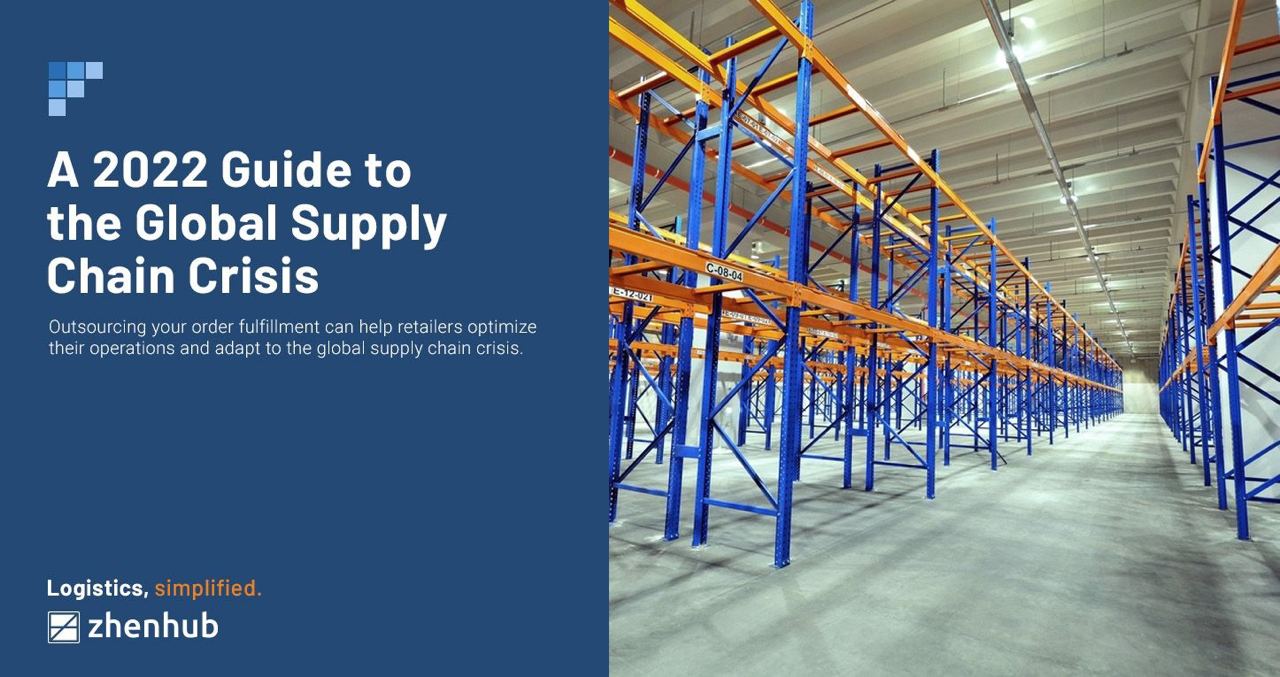
Are We Going Into Freight Recession?
Time to read: 6 minutes
The trucking market is on a downside trend, with some experts warning of an impending freight recession. This article will discuss what a freight recession would mean for businesses and logistics companies and how they can prepare for it.
The freight sector is predicting economic growth will slow down soon.
Bank of America experts laid out several economic factors that point towards a recession. Freight rates, capacity, and inventory levels saw a slow decline similar to March 2020, when the world experienced global lockdowns.
Prices of big used rigs are slumping this year, with prices 20% cheaper than what they were last year in the same period. Supply chains are still in disarray, causing many global disruptions such as port congestion, product shortages, and several other logistics challenges hampering business operations.
All this has created a domino effect on already overburdened supply lines. FreightWaves CEO Craig Fuller, a top supply-chain news and data source, is wary of a coming freight recession.
Fuller explains, “We think another sharp, painful downturn in the U.S. truckload market is imminent, and it could be as bad as 2019.”
In 2019, there was an oversupply in trucking, which resulted in surging growth in the industry in the two previous years. Prices dropped sharply, causing many companies to go out of business. Demand for trucking has been uncharacteristically low, and customer sales were not as high as projected, mostly a side-effect of global shortages.
What is a Freight Recession?
A recession is a general economic decline in which trade and industrial activity are reduced, generally identified by a fall across two successive quarters of GDP.
The freight industry is typically a small part of the overall economy but impacts larger economic sectors such as industrial and construction activity. It can lead to recessionary conditions across all industries because supply chain disruptions happen at every level—from production through distribution channels. For example, heavy machinery and components tied to the industrial and construction sectors can significantly affect freight volumes. There’s significant spending on education and health care but has little influence on freighting. Consumer spending generates a lot of freight activity but can also be affected by product sizes. Smaller products generate little freight demand, as more of them can fit into a single trailer.
Overall volume is one way to accurately measure real-time demand for freight, while seated truck availability represents the overall capacity to handle it. Truckloads are the largest domestic transport sector. It becomes a freight recession if the trucking experiences consecutive quarters of volume decline. Overcapacity is a recession’s most common manifestation as freight volumes, and tender rejections tend to be low during this period.
Low tender rejection rates show that current contract rates are low enough to encourage acceptance of previously agreed-upon terms, which leads to lower prices during future negotiations. These market conditions make it difficult for truckload carriers; margins diminish, and large portions of their fleet are idle.
We can measure the health of our freight market by looking at industrial production. A contraction in year-over-year growth for manufacturing typically coincides with declines in shipping volumes. Rail traffic statistics are another metric to measure market health. Exclude coal and grain shipments as they are affected by non-cyclical factors. These factors should provide a fairly accurate sample of the current freight economy.
Signs that a Freight Recession Might Be Coming
The freight market has been volatile recently, with some experts warning of a looming recession. But should trucking be bracing for bad news? Or should it look forward to a possible future where things could finally turn around?
The drop in the spot market’s load-to-truck ratio can often signify reduced customer demand. But this may not always lead to a decline if long-term contracts for bigger carriers kick into high gear.
However, the decline has caused some concern from analysts who are reaching out to carriers on how they would respond if demand continues to fall. This matter is on top of current issues such as struggling driver recruitment and higher labor, fuel, and equipment costs.
“What will be interesting to see is how these companies can manage their cost structures with increasing costs and buying equipment while we see, potentially, a resetting of the market down,” said Jim Nicholson, senior vice president of operations at freight technology company Loadsmart.
1. Inflation and Lower Consumer Demand
Higher inflation and slowing growth have affected several markets, with the S&P 500 and Dow Jones Industrial Average dropping 4% and 3.6%, respectively. Many logistics markets felt the downturn, with several large shipping conglomerates such as FedEx and Old Dominion Freight Line experiencing drops in their overall value.
As fewer people are lining up to buy consumer goods in retail stores and online, logistics firms that are part of the network are moving fewer products. Businesses get constantly challenged on all fronts meaning sustainable growth is slow amidst a challenging economic environment.
2. Rising Prices of Trucks
During the COVID-19 pandemic, freight rates saw a huge boom due to massively increased demand and a reduced supply. This situation has encouraged many investors and new entrants to take the opportunity to fill in the gap by purchasing used trucks to generate profit. With a low entry barrier and flexible financing, many smaller logistics companies got their start by buying trucks.
The supply of new trucks is still in a precarious predicament, given the computer-chip shortages affecting the automotive industry and several other supply chain disruptions. As more companies lined up at auctions for more trucks, what little supply there was, started to dry up, causing them to sell for nearly triple the price from the previous year.
Unfortunately, this coincides with a softening demand for trucking, leading to an oversupply of trucks and plummeting freight rates. The result? Losses for many trucking companies.
3. Falling Freight Volumes
A recent Bank of America survey found that truckload demand has fallen 58% to a near-freight-recession level. The recent Cass Freight Index shows a noticeable drop in U.S. freight volumes from 2021’s growth, with the shipment components falling 0.5% year-over-year.
The ongoing Russian-Ukraine conflict, rising inflation, and interest rates have slowed down freight travel even more.
“After a nearly two-year cycle of surging freight volumes, the freight cycle has downshifted with a thud,” authors of the Cass Freight Index wrote in their April report. “The April data may include some indirect impact from lockdowns in China, but with container ship backlogs still off North American ports, the direct effects on finished goods imports seem more likely in the June/July timeframe.”
Comparisons and projections are challenging, with the global supply chain disruptions intensifying in the coming months.
Making your Business Ready for a Freight Recession
Despite the worrying news, many industry leaders are quick to point out that a freight recession may be overstated. The data also doesn’t immediately lead to the collapse of an industry. Government Sources and the Logistics Managers Index (LMI) suggest that the freight market is simply returning to pre-COVID numbers Most of the regression is felt mainly by newer carriers who have paid more for their fleets. Compared to the impressive and robust expansion of 2021, this year is experiencing more moderate growth.
Demand remains strong for larger shipping companies. CEO of the Old Dominion Freight Line, Greg C. Gannt, explains,
“Sometimes in a downturn, it provides the best opportunity for you to go out and do some things in certain markets that are extremely difficult, and that may present an opportunity for us. When those opportunities are there, you’ve got to strike and you’ve got to take advantage of them.”
Though the year-on-year numbers are down, many companies still report strong freight demand. The existing fleet and available drivers easily handle many assignments.
The freight industry has always been prone to small and sudden shifts while experiencing booms and busts. The first quarter is almost always the slowest period for most trucking companies. Some industries still report strong demand, such as housing raw materials. Even if some numbers may be down, it depends on different industry segments and individual customers.
Don’t wait for the recession to hit; start bracing for impact now. Proactively prepare your company for possible tough times and take a holistic approach to identify potential problems in your operations or process. Explore the possibility of digital innovation in your supply chain, and solidify existing relations with internal staff, clients, and partners. Understand current needs, monitor productivity, and secure a positive customer experience. Transparency and good communication can go a long way in building trust and ensuring that all shareholders are ready for a possible economic downturn.
Intelligent outsourcing can help boost your bottom line, streamlining processes and giving leaders more oversight over operations. Unload critical tasks from your staff with third-party logistics (3PL). They can help you save on costs and speed up delivery times with greater reliability. ZhenHub offers powerful tools that improve eCommerce fulfillment and logistics. Get connected with a diverse distribution network of global warehousing partners, allowing your business to overcome logistics hurdles with cost-efficient and trackable shipping services. Sign-up on our website for free and get started with our all-in-one platform.


